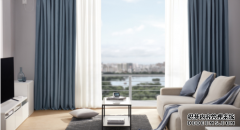网上古玩商城精品推荐19年第八期 青花鱼藻纹洗
网上古玩商城精品推荐19年第八期 青花鱼藻纹洗
明代正统、景泰、天顺三朝历时近三十年,正值景德镇御窑场生产低落时期,迄今尚未发现署有明确纪年款识的官窑瓷器,因此这一时期的瓷器生产面貌始终扑朔迷离,一向被称作明代陶瓷史上的“空白期”。究其原因,景德镇官窑曾一度在正统初罢,并且朝廷又三令五申禁止民间窑口私烧各种彩瓷,而正统至天顺年间景德镇又有过三次较大的饥荒,经济困难。正如文献资料《明实录·英宗实录》所载:“宣德十年春正月,英宗初即位……烧造瓷器……悉皆停罢,其差去内外官员人等即便回京”。
The orthodox, Jingtai and Tianshun dynasties of the Ming dynasty lasted for nearly 30 years, which coincided with the period of low production in Jingdezhen imperial kiln. no official kiln porcelain with a clear date has been found so far. therefore, the porcelain production in this period has always been uncertain and has always been called the "blank period" in the ceramic history of the Ming dynasty. The reason for this is that Jingdezhen's official kilns were once closed at the beginning of the orthodox period, and the government banned private burning of all kinds of colored porcelain at folk kilns for several times. During the period from the orthodox to Tianshun, Jingdezhen experienced three more famines, which caused economic difficulties. As the document "Ming Shi Lu-ying zong Shi Lu" contains: "in the first month of the spring of the 10th year of Xuande, the beginning of the reign of the English emperor ... the burning of porcelain ... stop, even if they are sent to officials inside and outside Beijing".

然而这一时期的官窑瓷器其实从未禁烧,仅是减烧而已,文献当中有着多次记录。据《明实录·英宗实录》载:“正统元年浮梁民陆子顺,一次向北京宫廷进贡瓷器五万余件”,“正统六年五月已亥行在光禄寺奏……其金龙、金凤白瓷罐等件,令江西饶州府造”,“正统九年五月庚戌,江西饶州府造青龙白地花缸瑕莹不堪,太监王振言于上,遣锦衣卫指挥仗其督官,仍敕内官齐样赴饶州更造之”。由此可见,空白期尤其是正统时期,景德镇御窑场仍为宫廷烧造御窑瓷器。
However, the official kiln porcelain of this period was never forbidden to burn, but only reduced. There are many records in the literature. According to "Ming Shi Lu-ying zong Shi Lu," Liu zishun, a member of the floating Liang people of the first year of orthodoxy, paid more than 50,000 pieces of porcelain to the Beijing court at one time. "in may of the sixth year of orthodoxy, he went to guanglu temple to play ... his golden dragon and golden phoenix white porcelain jars were made in Raozhou prefecture, Jiangxi province." in may of the ninth year of orthodoxy, Gengxu county, Jiangxi province, made the green dragon white ground flower jar, which was extremely flawed. eunuch Wang zhenyin went up and sent royal guards to command its overseers. he still ordered his officers to make it even more in Raozhou. It can be seen that in the blank period, especially in the orthodox period, Jingdezhen Imperial Kiln still made imperial kiln porcelain for the palace.

明代正统朝,瓷器的制作无论是造型、纹饰,还是青花色泽,所体现的时代风格均与宣德晚期署款的官窑器接近,是宣德制瓷风格的延续,但在生产中又有所演变和创新。正统青花瓷器所用青料有两种,一种为永乐、宣德时期使用的进口青料,青花色泽浓艳;另一种为国产青料,呈色较淡,为灰蓝色,这一时期使用国产青料开始居多。造型则直接继承宣德器物,器形饱满,瓶、罐类大形器与宣德时期相比差异不大,只是器物口部在正统时期略收,与宣德时器口部外撇稍有不同;器身线条方面,正统时线条变化比较平缓,宣德时线条起伏明显。纹饰布局方面,正统器青花亦是宣德青花的延续,瓶、罐多采用三段式布局方法:即肩、腹、足三部分。永乐、宣德时瓷器上出现的云气纹在正统朝被广泛使用 ,一般亦采用外粗线、里细线的画法。
In the orthodox dynasty of the Ming dynasty, the style of porcelain production, whether modeling, ornamentation or blue and white color, was similar to that of the official kiln made by Xuande in the late period. it was a continuation of Xuande's porcelain making style, but it was also changed and innovated in production. There are two kinds of green materials used in orthodox blue-and-white porcelain. One is imported green materials used in Yongle and Xuande periods, and blue-and-white porcelain is rich in color. The other is domestic green material, which is light in color and gray blue. The use of domestic green materials began to predominate during this period. The shape directly inherits the Xuande wares, and the shape of the vessels is full. Compared with the Xuande period, the large vessels like bottles and jars have little difference, except that the mouth of the vessels is slightly closed in the orthodox period, which is slightly different from that of the Xuande period. In terms of body lines, the changes of lines are relatively gentle in orthodoxy and obvious in Xuande. In terms of decoration layout, the orthodox blue-and-white ware is also a continuation of Xuande blue-and-white ware. Bottles and jars are mostly arranged in a three-stage layout method: shoulder, abdomen and foot. The cloud pattern on porcelain in Yongle and Xuande dynasties was widely used in the orthodox dynasty, and the painting method of thick lines on the outside and thin lines on the inside was generally adopted.
以这件正统朝的青花鱼藻纹洗。通体以青花为饰,构图典雅,釉彩明净,绘画精美,层次丰富。内壁外层绘缠枝莲花纹,盘心中央圆形绘鱼藻纹,水草轻摇,水流潺潺,青萍漂浮,游鱼穿梭其间,一幅灵动变化的池塘景色。外壁装饰缠枝莲花纹。内圈足绘“大明正统年制”青花六字二行款。绘鱼在中国传统文化中有着相当重要的象征意义,鱼是道教吉祥物,象征自由自在。并且“鱼”与“余”同音,是“富贵有余”、“连年有余”的意思。鱼藻纹使整个盘面既生动又不失庄重典雅,双层花口、双圈足装饰性强,极具艺术观赏性。
Wash with this orthodox blue and white fish algae. The whole body is decorated with blue and white, the composition is elegant, the glaze is bright and clean, the painting is exquisite, and the level is rich. The outer layer of the inner wall is painted with lotus flower patterns, the center of the plate is round with fish and algae patterns, the aquatic plants are swaying gently, the water is rippling, the duckweed floats, and the swimming fish shuttles between them, creating a lively and changing pond landscape. The outer wall is decorated with lotus flower patterns. The inner ring is full of blue-and-white six-character and two-line blue-and-white designs of "Daming Orthodox Year System". Painting fish is of great symbolic significance in traditional Chinese culture. Fish is the mascot of Taoism and symbolizes freedom. And "fish" and "Yu" are homophones, meaning "more than riches and honour" and "more than years". The fish and algae lines make the whole disk surface lively, solemn and elegant, with double-layer flower openings and double-loop feet, which are highly decorative and artistic.
企业电话:400-681-6118
网上古玩城
- 新闻
- 房产
- 汽车
- 娱乐
- 体育






















